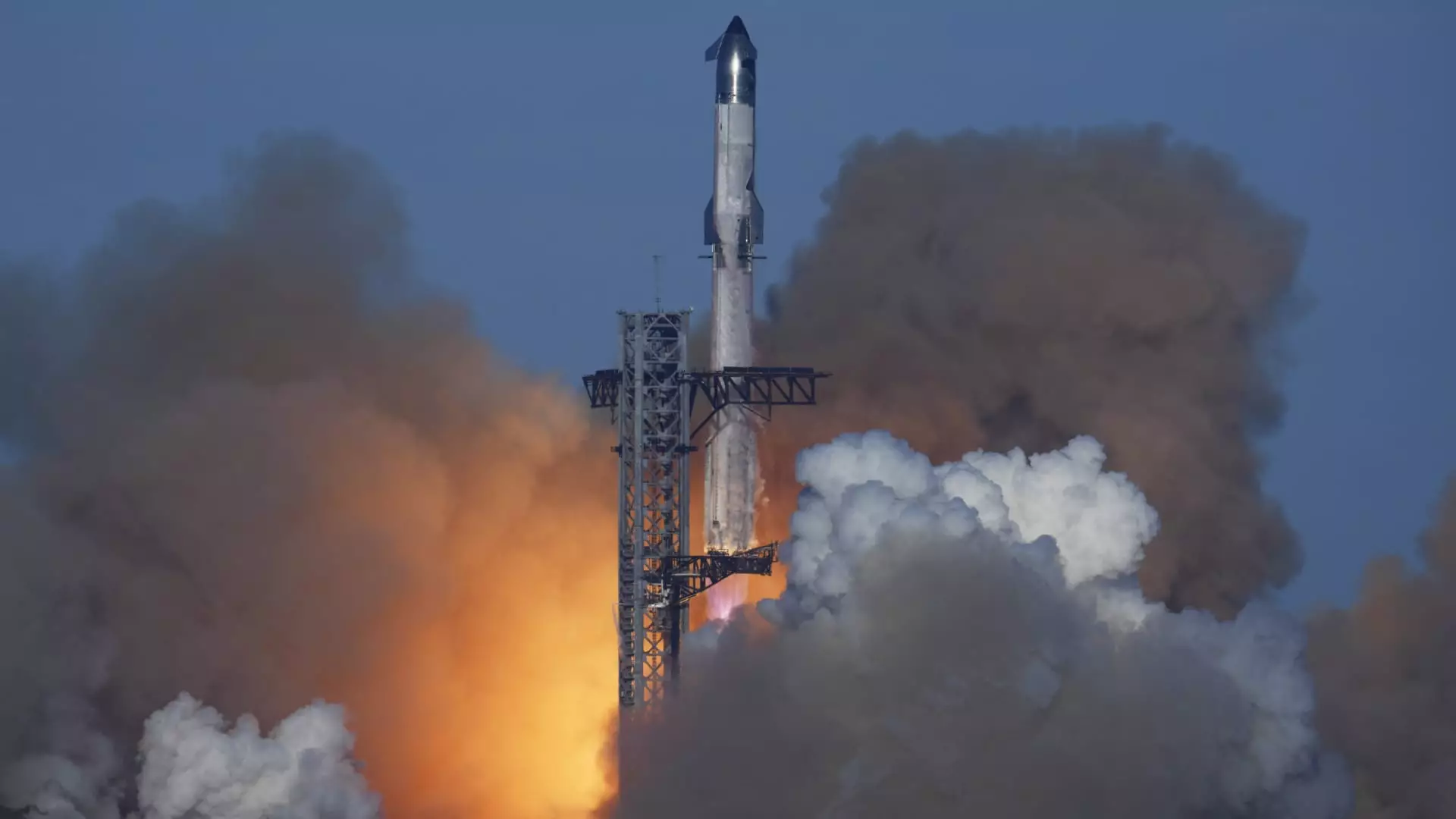On a notable day for space exploration, the Federal Aviation Administration (FAA) announced that SpaceX’s Starship rocket would remain grounded following the unfortunate midflight failure during its recent test. This incident not only raised questions about the integrity of the spacecraft but also had substantial repercussions for commercial airline operations. In an environment where space and air traffic increasingly intersect, the implications of such failures extend well beyond the launch pad.
The FAA’s decision to ground Starship illustrates the regulator’s commitment to ensuring safety in the aerospace sector. Despite no reported injuries to the public, the agency acknowledged property damage on the Turks and Caicos islands, emphasizing the need for thorough investigations before approving further launches. The focus now turns to SpaceX, which must undertake a comprehensive investigation to identify the root causes of the failure and implement necessary corrective measures. The FAA’s vigilance highlights the delicate balance between innovation in aerospace technology and the regulatory frameworks designed to protect public safety.
One of the most immediate effects of the Starship explosion was the disruption it caused in commercial air travel. Airlines including American Airlines, JetBlue, and Delta had to divert numerous flights, demonstrating how an incident in the space sector can ripple through other modes of transportation. The FAA’s activation of a “Debris Response Area” stresses the importance of preparedness for unforeseen events. This incident serves as a wake-up call for the industry—the potential hazards posed by space launches are not confined to the realm of astronauts and scientists; they can have tangible impacts on everyday travelers.
In the wake of the incident, SpaceX asserted that a fire within the vehicle likely led to the catastrophic failure of the Starship. However, communication from the company showed inconsistencies that raised eyebrows. Initial statements suggested that debris had fallen into the Atlantic within established hazard areas, contradicting the FAA’s explanation for the precautionary zone it activated. This discrepancy underlines the critical nature of clear and precise communication in crisis situations. As the aerospace industry increasingly relies on public support and investor confidence, transparency becomes paramount.
As the investigations unfold, the future of SpaceX’s Starship program hangs in the balance. While the innovative ambitions of SpaceX may facilitate advancements in space exploration, they must be tempered with rigorous safety protocols. The FAA must work closely with SpaceX to ensure that once the investigation is complete, any proposed corrective actions are both realistic and effective. The aerospace community must acknowledge that while the progress of technology is vital, the safeguarding of people and property remains the foremost priority.
The grounding of SpaceX’s Starship leaves us with a poignant reminder of the complexities involved in space travel. As we advance ever closer to making space more accessible, the lessons learned from such failures will be critical in shaping a safer, more reliable future for both aerospace and aviation industries.

